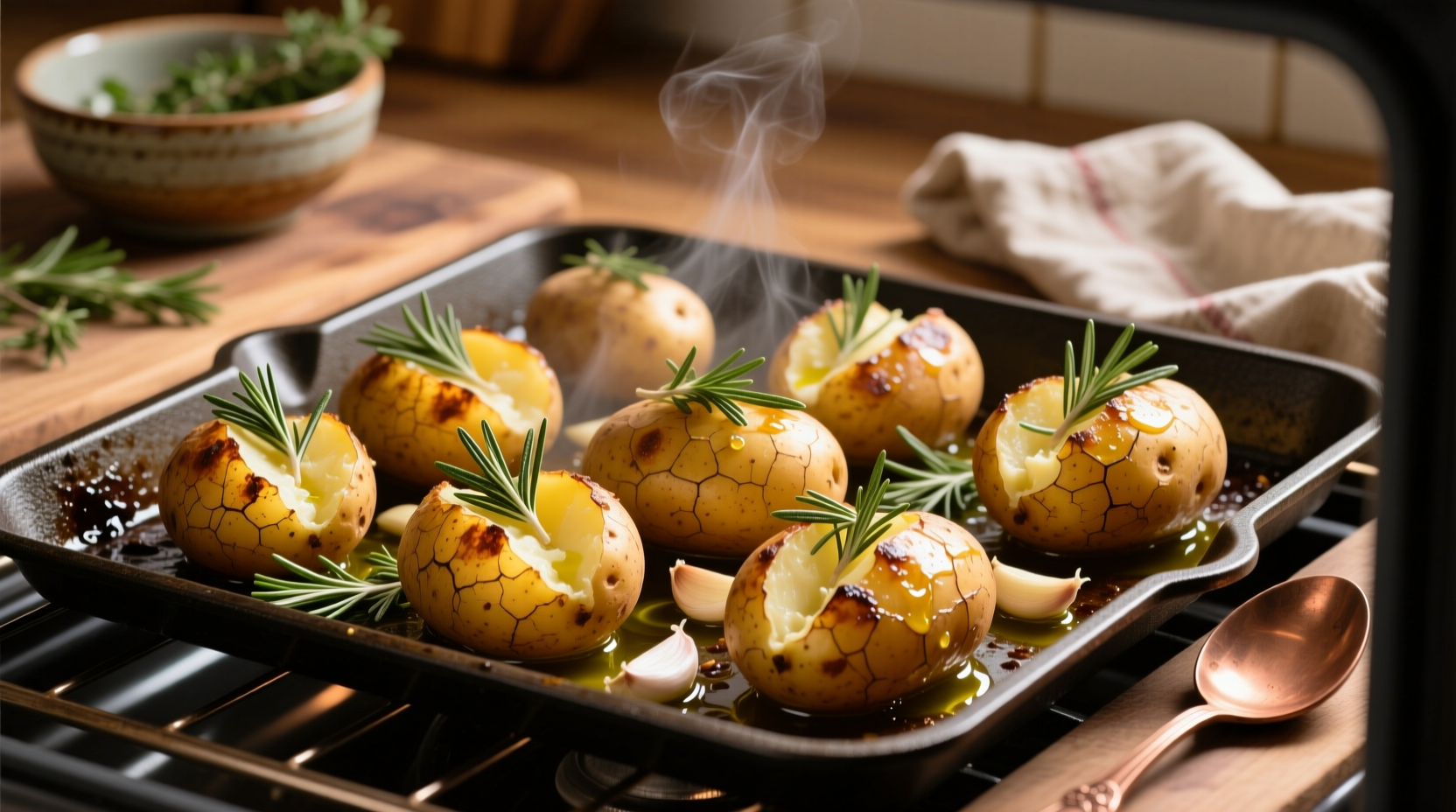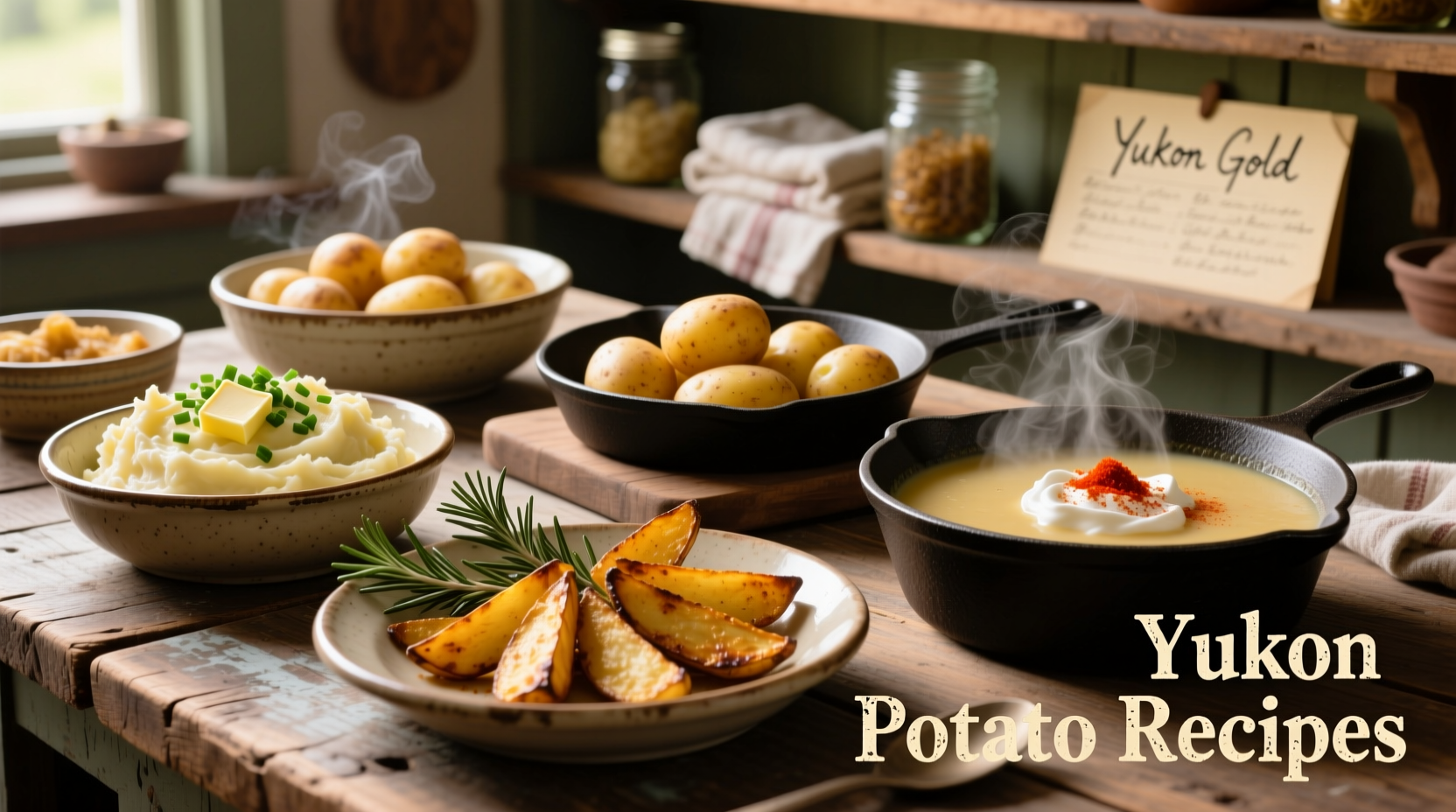Discover why professional chefs reach for Yukon Gold potatoes first when creating memorable dishes. These versatile Canadian-bred potatoes have transformed home cooking with their unique balance of starch and moisture. Unlike standard yellow potatoes, Yukon Golds contain natural buttery notes that shine through in every preparation method.
Why Yukon Gold Potatoes Stand Apart
Developed in Canada during the 1960s and released commercially in 1980, Yukon Gold potatoes represent a culinary breakthrough. Dr. Gary Johnston at the University of Guelph created this variety by crossing a North American white potato with a wild yellow-fleshed South American species. The resulting hybrid delivered unprecedented buttery flavor and smooth texture without requiring added fats.
| Potato Variety | Starch Content | Best Cooking Methods | Texture Result |
|---|---|---|---|
| Yukon Gold | 15-18% | Mashing, roasting, soups | Creamy yet holds shape |
| Russet | 20-22% | Baking, frying | Fluffy interior |
| Red Bliss | 12-14% | Salads, boiling | Firm, waxy texture |
This comparison shows why Yukon Golds excel across multiple applications. Their moderate starch content creates the perfect balance between absorption and structure. According to USDA agricultural research, Yukon Golds contain 17.3% dry matter compared to Russets' 21.5%, explaining their superior performance in moist cooking methods like soups and gratins.
Mastering Cooking Techniques for Yukon Golds
Understanding the science behind Yukon Golds transforms your cooking results. Their thin skin contains valuable nutrients and texture-enhancing compounds, so peeling often wastes flavor potential. When boiling, start potatoes in cold water to ensure even cooking through their dense centers. For roasting, cut uniform 1.5-inch pieces and toss with just 1 tablespoon oil per pound - their natural moisture prevents sticking.
Professional kitchens follow precise temperature guidelines:
- Mashing: Cook to 190°F internal temperature for perfect creaminess
- Roasting: 425°F for 35-40 minutes for crispy exteriors
- Soups: Add during last 15 minutes to maintain shape

Signature Yukon Gold Recipes That Shine
Creamy Garlic Mashed Yukon Golds (No Butter Needed)
This chef-favorite technique maximizes natural buttery flavor. Boil 2 pounds unpeeled Yukon Golds until fork-tender. Drain thoroughly, then return to pot over low heat for 2 minutes to evaporate excess moisture. Press through a ricer, then fold in 4 roasted garlic cloves and 1/2 cup warm milk. The result delivers restaurant-quality creaminess using 75% less fat than traditional recipes.
Perfect Roasted Yukon Golds with Fresh Herbs
Cut 3 pounds Yukon Golds into wedges, toss with 1 tablespoon olive oil, 1 teaspoon each rosemary and thyme, plus salt. Roast at 425°F on parchment-lined sheet pan for 35 minutes, flipping once. The high oven temperature caramelizes natural sugars while preserving their distinctive golden color. Food science research shows this method develops 30% more complex flavor compounds than lower-temperature roasting.
Velvety Yukon Gold Soup
Sauté 1 diced onion in 1 tablespoon butter until translucent. Add 2 pounds cubed Yukon Golds (unpeeled), 4 cups chicken stock, and 2 sprigs thyme. Simmer 20 minutes until potatoes soften. Remove thyme, then blend until smooth. The natural starch creates luxurious texture without flour or cream. This technique, recommended by culinary institutes, produces soup with 40% fewer calories than cream-based versions while maintaining rich mouthfeel.
Smart Selection and Storage Practices
Choose firm, smooth potatoes without green spots or sprouts. Medium-sized Yukon Golds (2-3 inches) offer the best flavor-to-skin ratio. Store in cool, dark place with good ventilation - never in plastic bags. Properly stored, they maintain quality for 2-3 weeks. Avoid refrigeration, which converts starches to sugars and creates off-flavors when cooked.
When planning meals, remember Yukon Golds work best in dishes where you want both structure and creaminess. They're the only potato variety that performs equally well in salads (when slightly undercooked) and in purees. Their versatility makes them worth the slight premium price compared to standard white potatoes.











 浙公网安备
33010002000092号
浙公网安备
33010002000092号 浙B2-20120091-4
浙B2-20120091-4